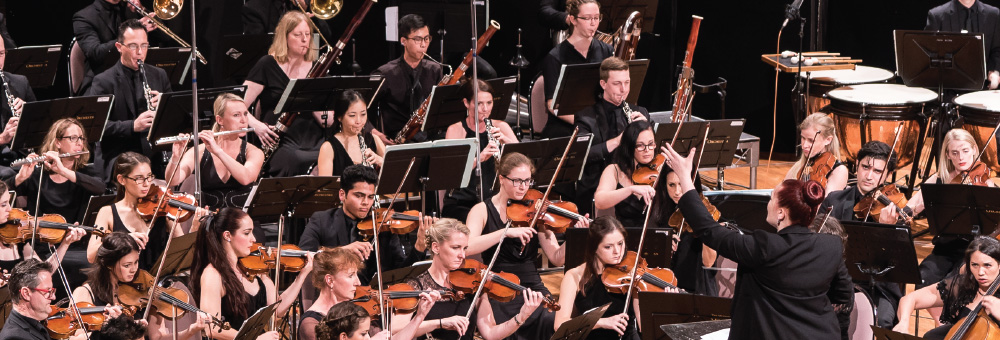8pm Saturday 7th September 2019
Eugene Goossens Hall, ABC Centre Ultimo
MAHLER – Symphony No.5
Conductor: Sarah-Grace Williams
| Mahler, Gustav (1860-1911)
|
Symphony No. 5 in C-sharp minor |
Erster Teil (Part I)
- In gemessenem Schritt. Streng. Wie ein Kondukt. (Funeral March. With a measured tempo. Strict. Like a funeral procession)
- Stürmisch bewegt, mit größter Vehemenz (Violently agitated, with the greatest vehemence)
Zweiter Teil (Part II)
- Kräftig, nicht zu schnell (Strong but not too fast)
Dritter Teil (Part III)
- Sehr langsam (Very slow)
- Rondo-Finale. Allegro – Allegro giocoso. Frisch
The months prior to Mahler beginning composition of his Fifth Symphony were tumultuous for the esteemed conductor and composer. In early 1921, Mahler’s day involved conducting two performances, the first being with the Vienna Philharmonic performing Brucker’s Fifth Symphony, followed later in the evening conducting Mozart’s Magic Flute with the Vienna Court Opera. He suffered a massive haemorrhage that night, and was fortunate that his sister was present to summon a doctor who was able to save him.
A full recovery saw Mahler enjoy the summer of 1901 at his vacation house in the southern Austrian town of Maiernigg, where he completed drafts of the first two movements of his Fifth Symphony. It was summer-time that Mahler spent composing, as this was when he was gained respite from his hectic conducting schedule. The short score for his Fifth was completed during the summer of 1902, and the orchestration completed in summer 1903. It wasn’t until October 1904 however that the symphony was premiered in Cologne, conducted by Mahler himself.
His Fifth Symphony saw a new direction for Mahler’s music, with symphonies that no longer needed a programmatic discussion, and unlike Symphonies Two, Three and Four, no longer contained any sections for singers, and his Symphonies Five, Six and Seven were purely instrumental. Despite a new direction and new compositional style, Mahler uses hints of past works to show us the musical world he has left behind in favour of new music for the new century.
©Andrew Doyle 2018

